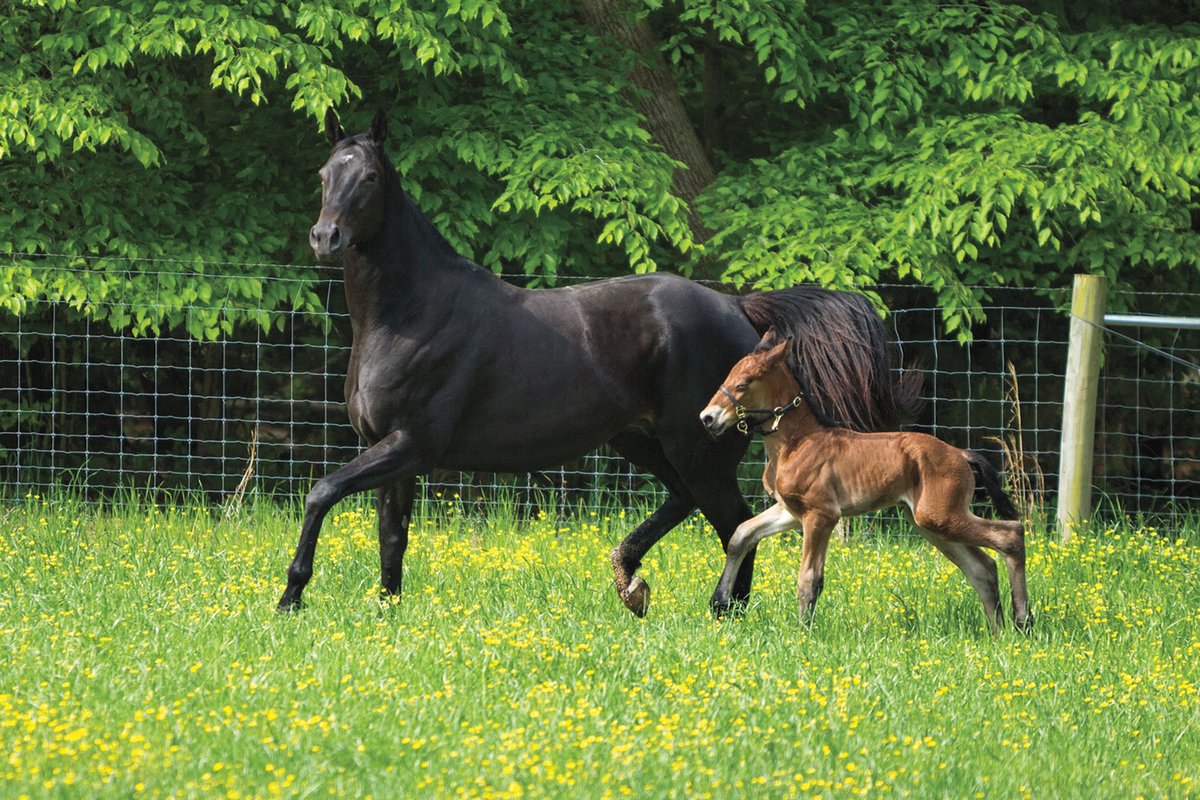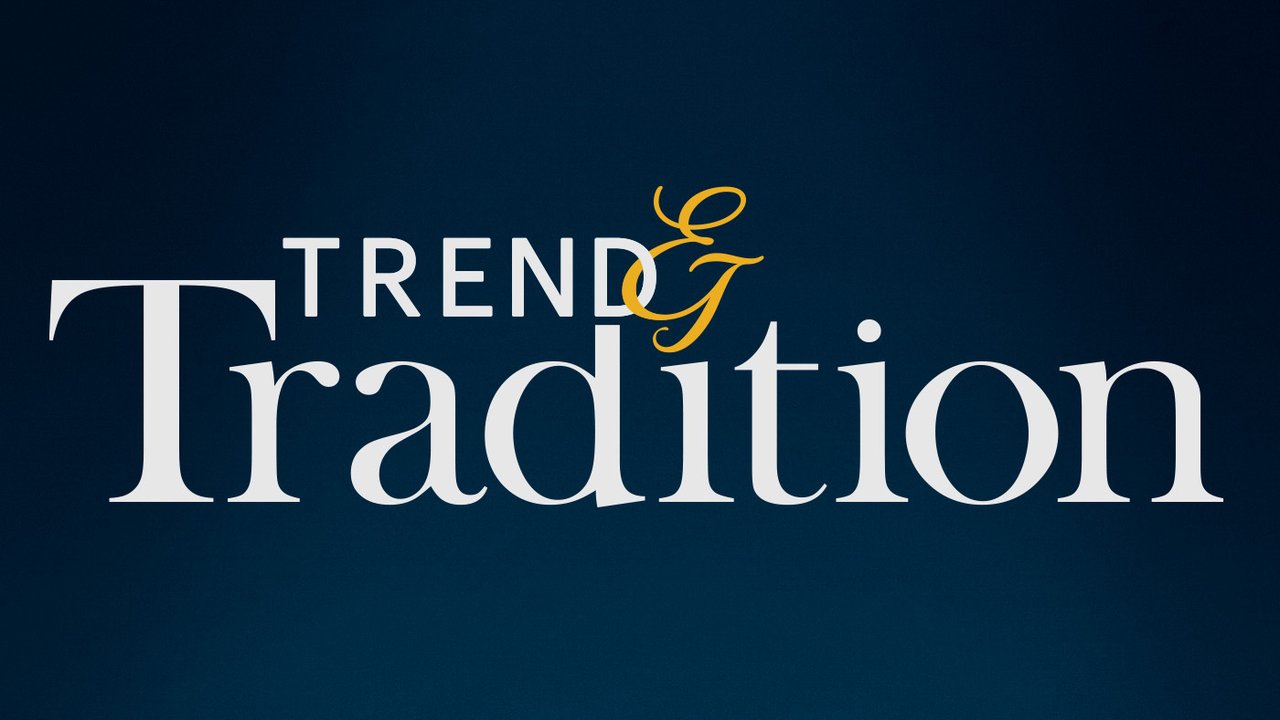
A Stable Population
Foundation’s breeding program focuses attention on all-purpose horse popular in early America
Cleveland Bays were among the horses known to early Americans, and five mature mares of that breed roam The Colonial Williamsburg Foundation’s pastures today. They are part of a stewardship program called the Rare Breeds — and these horses are rare, indeed.
Once prized for its versatility, the Cleveland Bay is now critically endangered.
To help preserve — and revive interest in — a breed that 18th-century colonists depended upon, Colonial Williamsburg is attempting to add to its herd.
The birth in late April of Valiant, a Cleveland Bay, and the first foal born at Colonial Williamsburg in almost 16 years, is an important milestone — living proof of the Foundation’s desire to create one of the nation’s most robust Cleveland Bay breeding programs, bolstering a population of critically rare animals while enhancing the museum’s devotion to distinctive living history.
Perhaps the Cleveland Bays’ best credential for joining Colonial Williamsburg’s cast of interpreters is their historical accuracy, according to Paul Bennett, the Bill and Jean Lane Director of Colonial Williamsburg’s Coach and Livestock Department. Cleveland Bays are a breed that was well established by the colonial era and has remained more or less intact since the stirrings of revolution.
“At Colonial Williamsburg, we ask some strange things of our animals,” Bennett said. Horses must be tolerant of frequent human contact and comfortable at such major gatherings as Grand Illumination, which can draw tens of thousands of people. Jarring stimuli, including fifes and drums, musket shots and fireworks, happen regularly.
Cleveland Bays are ideal for all the jostling a re-created Revolutionary-era town throws at them, says Kris Goeckeritz, a Colonial Williamsburg coachman.
“Their temperament is very good and they’re easy to take on a crowded street,” she said. “They do especially well with kids.”
Yet the attraction so valued in the 18th century faded as men and machines powered through the Industrial Age. Now, Bennett says, Colonial Williamsburg can serve as a special incubator for the resurrection of this historic breed.
An English Pedigree
The breed is named for both the Cleveland region of Yorkshire, England, where it emerged, and the bay color of its body, which is set against black legs and hair. Cleveland Bays are tall, but not remarkably so. Sloping shoulders frame a body that’s both broad and deep. Among the horses’ most prominent features are their feet, which are wide and sturdy.
For a pre-industrial, horse-centric culture, these elements were important. Cleveland Bays were strong enough to plow or to pack heavy loads, and dogged enough to do it all day. They could navigate rutted country byways at a respectable clip. And for people fortunate to have two or four, Cleveland Bays’ consistent color made for handsome matching pairs of carriage horses.
Lord Dunmore, the last royal governor of Virginia, owned a Cleveland Bay named Wild Air, who grazed Virginia pastures. When patriots sent Dunmore packing, Wild Air went back to England, too. The breed was so useful that Cleveland Bays made appearances in many historic eras, such as the Wild West (“Buffalo Bill” Cody drove a team of six) and World War I, when they pulled artillery.
But mechanization, and their own perceived mediocrity, were Cleveland Bays’ undoing. Not needed for work or travel, Cleveland Bays found trouble standing on their own laurels. Horse enthusiasts looked to breeds that were exceptional in size, speed or beauty, and the Cleveland Bay fell out of favor. By the 1960s, there were fewer than six purebred stallions in the United Kingdom. When the breed stood at the brink of extinction, salvation came from an unlikely place: The Royal Mews, a stable that is home to royal coaches and carriages.
In 1961, Queen Elizabeth II acquired a purebred Cleveland Bay colt named Mulgrave Supreme, a purchase that ultimately brought the breed back into prominence. Foals he sired populated pastures around the United Kingdom and beyond. With the help of passionate breeders, the number of Cleveland Bays has since inched upward. Experts surmise that the worldwide herd of purebred Cleveland Bays now numbers about 1,000 — still fewer, Bennett notes, than the number of the once-endangered Giant Pandas. Just over 220 of those purebred Cleveland Bays can be found on this continent, according to the Cleveland Bay Horse Society of North America.
The Birth of a Breeding Program
In 2016, the first pair of Cleveland Bays – Isabella and Lancer – arrived, thanks in part to gifts from Cindy Kiser, and Claudette and Steve Tallon. Soon, a few more purebred Cleveland Bays took up residence at Coach and Livestock stables, including Willow, Clarence and Buckshot.
Caring for a small herd of critically endangered horses was merely a taste of the hard work that lay ahead, because Bennett knew that if Coach and Livestock was to build a breeding program, the fundamental element was, of course, reproduction. And that’s where husbandry would strain patience and test the limits of financial commitment.
Ensuring the pregnancy of a Cleveland Bay mare requires much more than giving horses the space they need to let their natural urges run their course. In years past, with more common breeds, it was much easier, according to Bennett.
But because Cleveland Bays have such a small gene pool, breeding requires ample deliberation and cross-checking to make sure that potential mates are genetically distant enough. This demands advanced technology and close veterinary intervention — importation of semen, for instance, and embryo transfer to surrogate mares.
The Cleveland Bay Horse Society in the United Kingdom has found success using a breeding scheme known as SPARKS, or Single Population Animal Records Keeping System, according to Andy Dell, who sits on the organization’s breed committee. This method employs a worldwide genetic database to find and connect the best matches and avoid pairings that are too closely related. Such a meticulous effort, said Dell, has already “aided breeders to make sensible and robust breeding choices to stem the loss of genetic diversity within the breed.”
Dell said that by moving forward so thoughtfully, Colonial Williamsburg can “become a role model for breeders in North America.”
Still, all the time and expertise in the world doesn’t guarantee successful outcomes. Throughout 2017, Coach and Livestock staff confirmed the early stages of pregnancy in Cleveland Bay mares several times, but the pregnancies could not be brought to term.
Bennett and his staff persisted, using techniques to aid the goal of birthing Cleveland Bay foals onsite, such as the use of artificial lighting to simulate the seasonal rhythms that bring mares into heat. In 2018, mares pregnant with purebred Cleveland Bay foals passed important benchmarks under close veterinary care. And in late spring of this year, the proverbial stork visited Colonial Williamsburg’s stables, marking the successful commencement of the Cleveland Bay breeding program.
Bennett’s vision will play out over a decades-long horizon, and it will require the same donor-supported commitment that already sustains Colonial Williamsburg’s Rare Breeds program.
In 20 years, Bennett imagines most, if not all, the horses at Colonial Williamsburg will be Cleveland Bays. That will be a triumph for The Colonial Williamsburg Foundation, for the endangered breed and for the living history that enlightens us in ways that words never can.
“You and I speak, dress and act differently than we did in colonial times,” Bennett said. “These horses have stayed the same. They are our cultural heritage, straight from the 18th century.”
More from this Issue

